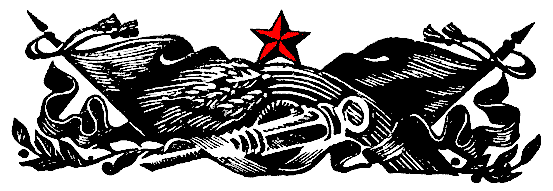
The Yugovian Khanate
The Yugovian Khanate is ruled from the quasi-nomadic city of Ger which travels an annual prescribed route following the changing seasons and fluctuations in the unique biome of Yugovia. Radioactive contamination is periodically released by seasonal storms that disturb contaminated particles trapped in high altitude deserts. This contamination travels across the steppe in relatively predictable patterns and has forced the migration of the Yugovian Khanate since the settlement of the Ruz Steppe in antiquity. The local flora and fauna have grown remarkably tolerant of the residual radiation from a long forgotten catastrophic event but the combination of inhospitable/radioactive climate for human settlement, arid-steppe conditions, and political-social fragmentation has locked the Yugovian Khanate into a cycle of instability.
Ger is the largest nomadic settlement and ruled by the ostensible leader of the Yugovians, the Khan or Atman (depending on dialect). This Khan has only nominal authority over the other three nomadic cities: Ger Osh, Ger Bul, and Ger Tur. Typically the Noyon of the city pays a periodic tribute to the Khan, however, this tribute is paid only if the Khan can preserve the general safety of the Yugov nation. Generally, the Khan rules for as long as his army can prevent the ever present steppe bandits, tribesmen, and city-states from enticing a Noyon to proclaim themselves Khan and depose the present ruler.
Intercine conflict is constant and is interrupted only to repel foreign invasion that must pose enough of a threat that the Khan can fully command the loyalty of the Noyons. Typically this loyalty is short lived and the cycle of continuous warfare resumes as soon as the foreign threat is dealt with. This ensures that even the most popular national heroes are oftentimes purged as soon as their memory cult is enshrined in a statue along the annual route of Ger. These statues are commonly defaced the next time the city passes which has led to the emergence of dozens of statues to forgotten Khans and Noyons, some of which are responsible for saving the entire Yugov nation.
The Yugov people are the largest ethnic group with 100 million registered families and an unknown amount of unregistered steppe dwelling villages. Ruz are the second largest ethnic group to be found in Yugovia and are focused around the permanent city of Utop, a partially ruined enclave that is accessible only with the help of a local guide. This is due to the high degree of contamination surrounding Utop and the unreliability of previously used pathways due to constantly shifting rubble. They are believed to number around 20 million but are notorious for their hidden enclaves and subterranean redouts. The smallest ethnic group in Yugovia are the Turgs who number 10 million and are restricted to a series of fortified city states along the uncontaminated coast. They are the most reliable trading partners of the Yugovs and supply them with all variety of industrial products, tools, and other goods in exchange for raw materials and artifacts from the now forgotten civilization considered responsible for the contamination of Yugovia.
The Great Store of Random Information
| Khan | Ruler |
| Noyan | Rules a city |
| Nar | Rules a tribe, feudal landowner |
| AbKom | Rules a commune, village, town, etc. |
| Tov | A common person/equivalent to Mr./Mrs. |
| Par | An outcast, invalid, criminal |
| Prol | A slave, small peasant, worker |
| Tamag | An individual touched by the Gods in some way |
| Stalkers | Adventurers/Scavengers |
| Hunters | Raiders |
| Tribesmen | Nomadic Yugovs who live outside of the established feudal order, same classes as organized Yugovs |
| Ruzi Remnants | Well organized, ruthless, and professional commandos, soldiers, and agents operating on behalf of the Ruzi enclave in Utop |
| Ab | Locative Prefix: Ab-Ruzi (land of Ruzi) Ab-Yugovi (land of Yugovs) |
| Yugov | Yugovi | Yugovia (Ab-Yugovi in Ruzi) |
| Ruz | Ruzi | Abruzi |
| Tur | Turi | Abturi |
| Yugovi | ~150 million total, 100 million in the Khanate, 50 million unorganized tribesmen |
| Ruzi | 50 million total, 40 million in Utop, 10 million in various enclaves and installations |
| Turi | ~10 million in coastal enclaves, responsible for most import-export trade, likely contacts for foreign adventurers in Yugovia |
Languages | |
| Yugov | Known to all Yugovi, Turi, and most Ruzi outside of Utop |
| Ruzi | Known to only the most well traveled non Ruzi |
| Turi | Known to merchants and other craftsmen/traders |
| Common | Known among the Turi and others who may have regular contact with foreigners |




